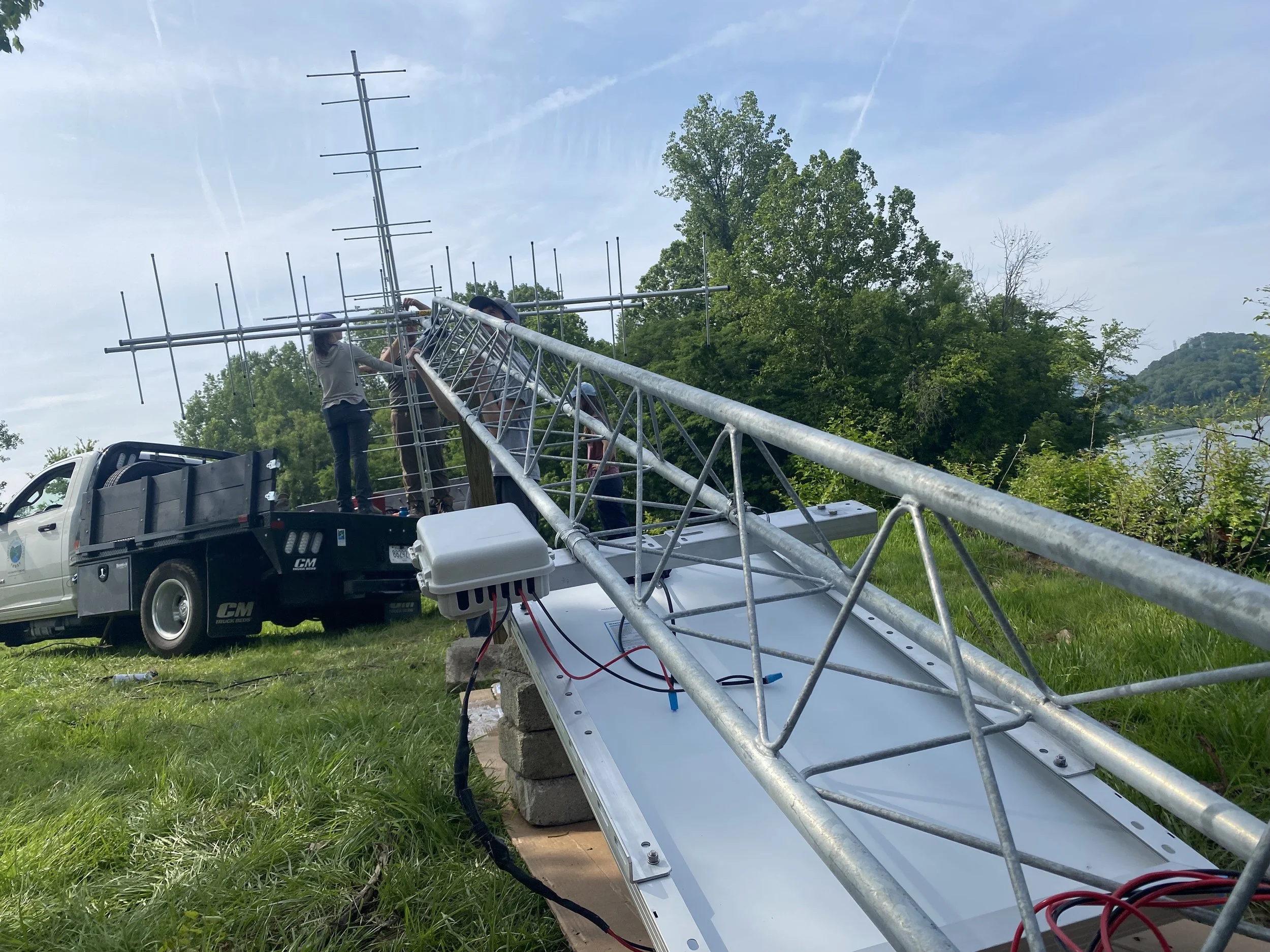Motus Bird Tracking Tower in the Tennessee River Gorge
By Eliot Berz
TRGT staff installing the Motus Tower
The mysteries surrounding migratory birds have stumped scientists for centuries. Although we have still only scratched the surface, technological advances have allowed researchers to better understand the movements of these far traveling animals. The Motus Wildlife Tracking System is one of these recent advances. Motus is an international collaborative network that uses radio telemetry towers to track bird movements. The towers receive signals from radio tags placed on birds, bats, and even insects whenever they fly within a certain proximity of a tower. Motus towers have been popping up all over the continent and the goal is to create an extensive network of towers that will capture as much bird movement as possible. This information is directly used by researchers to better understand certain bird species’ life cycles and to better conserve their populations.
TRGT’s interns working on the tower
The TRGT bird research team has installed the first Motus tower in the Tennessee River Gorge and the second tower in Chattanooga. This tower was made possible by a generous grant from REI. In 2022, Dr. David Aborn with the University of Tennessee Chattanooga installed a Motus tower at Reflection Riding Nature Center and Arboretum. Tagged birds traveling through the Chattanooga area will begin to be picked up as they fly within range of these two towers. The TRGT tower sits on the bank of the river by Williams Island at the beginning of the river gorge.
Wood thrush (Hylocichla mustelina)
TRGT’s first project deploying Motus tags on migratory birds will be with wood thrush in the spring and summer of 2024 in partnership with the Tennessee Wildlife Resources Agency. If you are not familiar with the wood thrush, you have likely heard its song from Hollywood. The wood thrush’s song is one of the more popular birdsongs and is often dubbed into jungle and outdoor scenes in the movies. This species spends its winter in Mexico and Central America, then spends the summer breeding and raising young in the eastern United States and southern Canada. The Tennessee River Gorge has a flourishing population of wood thrush, however the overall population is in decline. From 1966 to 2019, there was an estimated loss of over 50% of the global wood thrush population. By better understating their annual movements through technologies such as Motus, we can better conserve and protect their declining populations.
The finished product!





